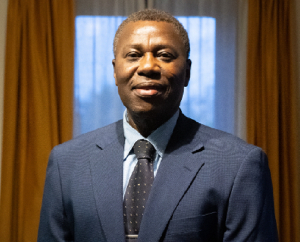At around 0700 local time in Bamako, Mali, on Friday, 20 November 2015, ten armed men, driving in a black Toyota 4 x 4 SUV, entered Bamako’s poshest hotel, the Radisson Blu.
They managed to enter the hotel with ease because their vehicle had diplomatic number plates, which would have been familiar to the hotel security (such as it was) because the hotel is the hotel of choice for all important visitors, especially diplomats, airline staff and NGO personnel.
The Radisson Blu Hotel is located west of Bamako city centre. It provides what is described as “upscale lodging”, close to many government offices and business sites. It has 190 rooms and suites. In a Media Statement at 12:00 GMT on 20 November, 2015, the hotel chain that owns the Radisson Blu carried this announcement on its website: “We are closely following the hostage-taking incident that is taking place at the Radisson Blu Hotel, Bamako. According to our latest information, 124 guests and 13 employees are still in the building. Our highest concern is the safety of all our guests and employees in the hotel. We are in constant contact with the authorities there and will share further information when we have it.”
The statement made no mention of the 80 hostages who had been released, although by saying that 137 people were “still” in the hotel, it implied that some people who had been in the building were no longer there. The statement did not make mention of the three people who, according to media reports, had been killed during the attack.
There were fears that more casualties might occur before the hotel was completely evacuated, for Malian security personnel had entered the hotel and were carrying out a two-pronged “engagement’ with the attackers, partly through peaceful negotiation, and partly through a show of superior force. Meanwhile, no organisation had claimed responsibility for the hostage-taking.
In the context of the recent attack in Paris in which 129 people were killed, it might be assumed that the attack in Mali is a sort of “sympathetic” strike carried out in solidarity with the murderers who brought havoc to Paris. But this need not be the case, for the French have been helping Malian central governments to battle groups of “dissidents” in Mali for quite some time now.
Unrest in Mali became full-blown in March 2012 when a Captain Amadou Sanogo led a coup coup d’etat to oust Mali’s ex-military leader, General Amadou Tamane Toure (who had become an elected civilian President). Sanogo claimed that General Toure had been overthrown because he was not giving the Malian army the resources it needed to defeat groups of dissidents who were trying to separate the northern part away from the rest of the country.
But it soon became clear that Sanogo wanted power for himself. However, instead of assisting the legitimate president to return to power, the French gathered a disparate group of politicians together and got them to come to an arrangement with Sanogo. Meanwhile, the dissidents became even stronger, and for e time, did cut the north off from the south of Mali. The French then moved into Mali in full force.
Arrayed against the French were five Islamists groups — Ansar Dine, the Movement for Unity and Jihad in West Africa (Mujao), al-Qaeda in the Islamic Maghreb (AQIM), the Signed-in-Blood Battalion and the Islamic Movement for Azawad (IMA).
Ansar Dine is a largely a home-grown movement, led by a former Tuareg rebel leader called Iyad Ag Ghaly. Its stated aim is to impose Islamic law across Mali and it is believed to have been responsible for the destruction of a lot Mali cultural relics. The invaluable Arabic manuscripts in Timbuktu were in danger of destruction from its fighters for a time, until the manuscripts were smuggled out of Timbuktu to Bamako by the curator of the Timbuktu Museum.
Another of the fighting groups, AQIM, is the north African wing of al-Qaeda. It operates more closely to the Algerian border, having been part of the Algerian rebels who fought against the government in the bloody civil war of the early 1990s.. AQIM too says its aim is to spread Islamic law (Sharia) and liberate Malians from French colonial legacy. A third Islamist group, called Mujao, is an AQIM splinter group that was formed in mid-2011.
And then there is Ansar Dine, which also seeks to impose Islamic law across the country
Many of its militants are Tuareg fighters who returned from Libya after fighting alongside the troops of the former Libyan leader, the late Col. Muammar Gaddafi. Ansar Dine, like AQIM, has split, and one of its former allies calls itself the MNLA., which is believed to have as its objective, the spreading of jihad across West Africa, rather than confining itself to the Sahel and Maghreb regions.
The competition between these groups and the Malian Government, is a veritable cocktail for instability. The UN has 12,000 troops in the north of the country, and the French have about 5,000 more in the area. But the dissidents are not in awe of these forces, and have been carrying out hit and run attacks in spite of their knowledge that the foreign forces could pursue them.
Clearly, a long-lasting and sophisticated approach is needed rather than the usual French-led “arrangements” which reward opportunism but never seem to bring any long-lasting stability. have proved able to manage over the years that it has intervened in the affairs of its former West African colonies.
Meanwhile, anyone who has ever stayed in a hotel abroad will be hoping that the siege at the Radisson Blu will end without too much further bloodshed, as those killed are usually people who have no connection whatsoever with the local political rivalries that give rise to such sieges.
Opinions of Monday, 23 November 2015
Columnist: Cameron Duodu















